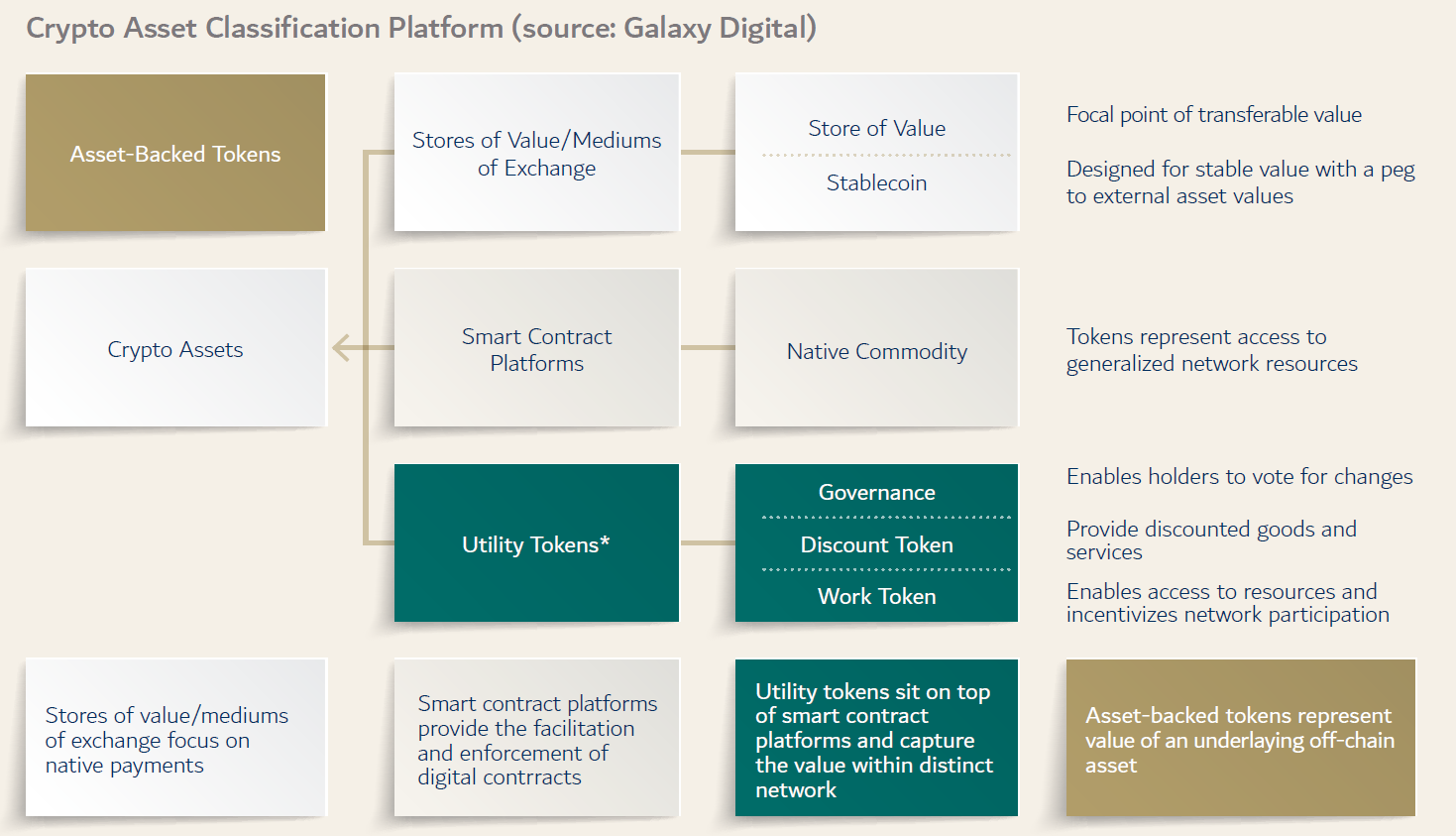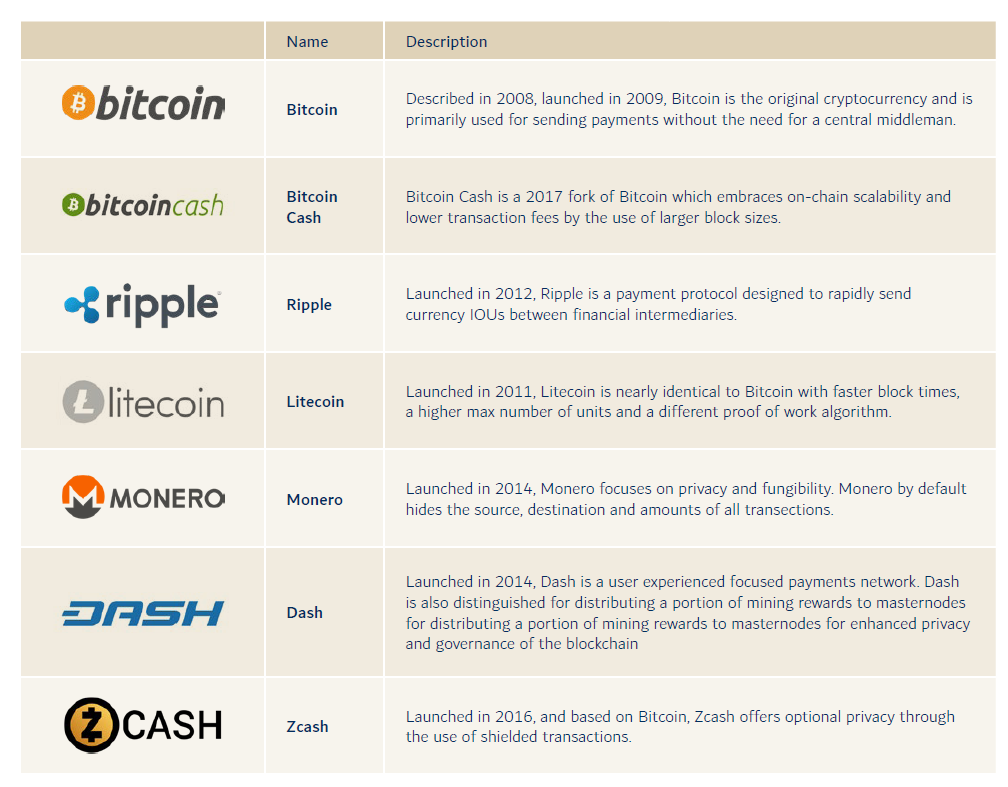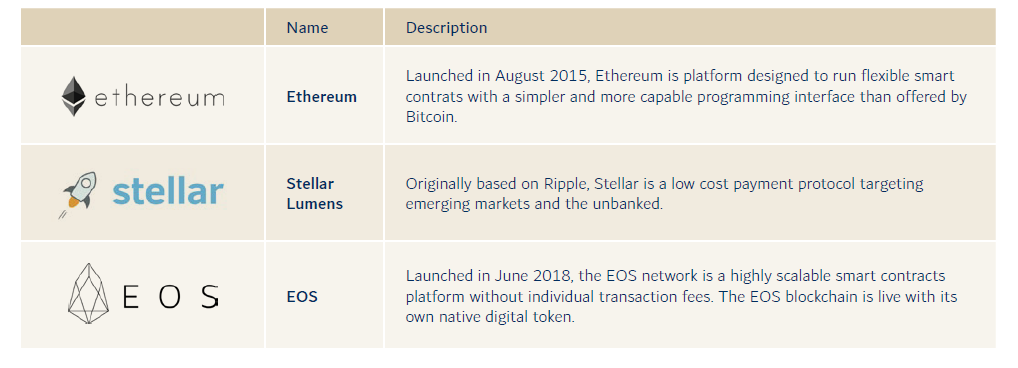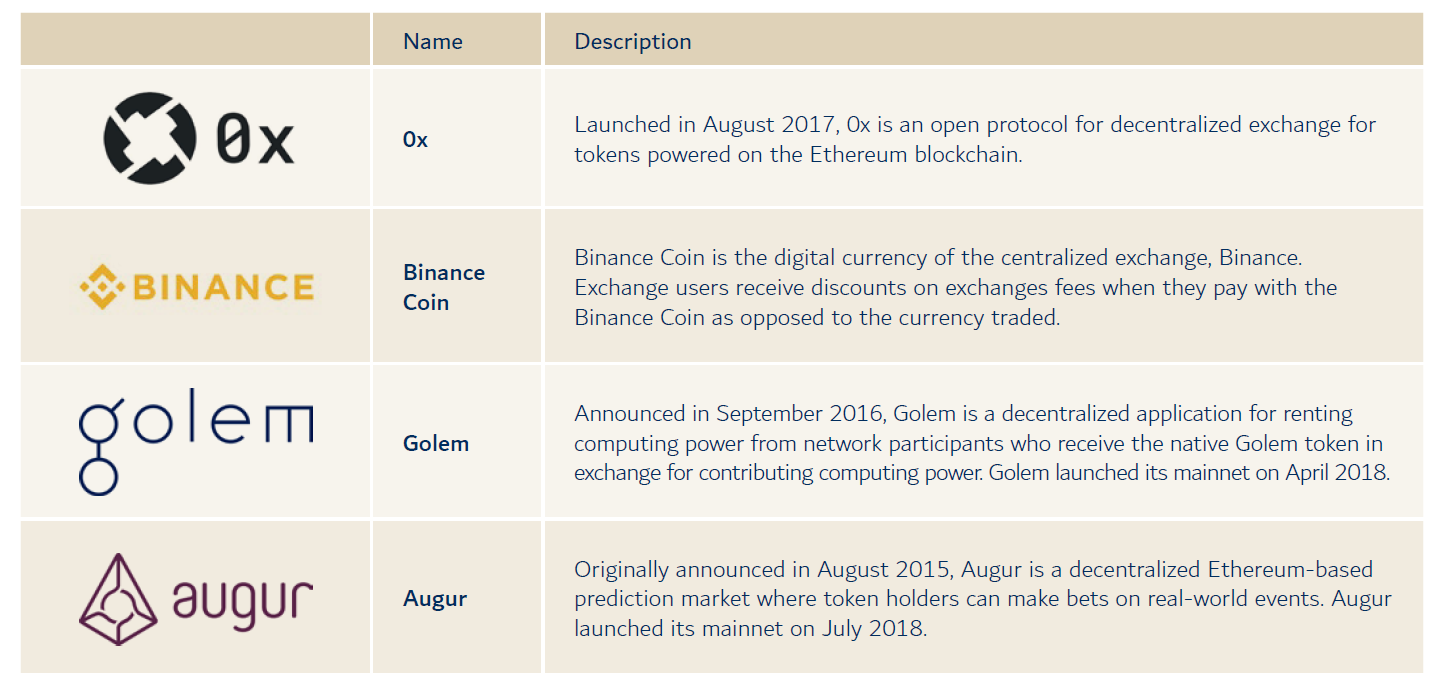Utility tokens, smart contracts, asset-backed tokens, etc. The growing usage of tokens in real-world blockchain projects has unveiled the need to understand what blockchain tokens in fact represent and how they relate to their underlying business model. In this blog, we attempt to provide readers a comprehensive classification of the different crypto assets.
Crypto Asset Classification
The term “digital assets” can be used to describe a wide variety of programmable value including “crypto assets,” which are native assets of public blockchains that utilize cryptography, such as Bitcoin and Ethereum. The term “cryptocurrencies” is also used but is a misnomer since many of the assets do not intend to be a currency. As such, we will refer to natively issued assets on public blockchains as “crypto assets.”
As shown below, we classify crypto assets into 4 different categories: asset-based tokens (which are backed by underlying off-chain assets such as real estate, collectibles, private companies, etc.), store of value / mediums of exchange, smart contract platforms and utility tokens.

(*) Most ICOs involve Utility tokens
Examples of Medium of Exchange/Store of Value
Examples of Smart Contract Platforms

Examples of Utility Tokens






